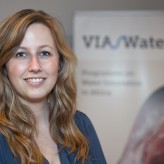Nowadays, Eastern Africa is a region facing multiple challenges when it comes to flood and drought management. Building capacity at regional level to reduce effects of disasters is fundamental for sustainable development. Up to now, insufficient attention has been put on developing technical capacity across the region for improved knowledge in the use of remote sensing technologies for rain fall estimation. A regional workshop on Precipitation Estimation from Remotely Sensed Information for targeted States (IGAD, EAC) using Artificial Neural Networks have been held on 23rd to 25thJuly 2018 at Makerere University, Kampala in Uganda. In fact, the Rwandan UNESCO National Commission and IHP National Committee have been requested to select participants and to nominate three experts from Rwanda including one from University of Rwanda, one from Rwanda Meteorology Agency (Meteo-Rwanda) and one from the Severe Weather Consult Ltd / Trans-African Hydro-Meteorological Observatory (TAHMO).
So, based on a capacity building programme in compliance with targeted countries, the UNESCO is jointly carrying out capacity building work with center for hydrometeorology & remote sensing (CHRS) at the University of California, Irvine (UCI) on real time precipitation estimation from remotely sensed information.
The targeted countries for the workshop included IGAD countries and EAC countries. IGAD stands for The Intergovernmental Authority on Development (IGAD) with eight-country trade bloc in Africa. It includes governments from the Horn of Africa, Nile Valley and the African Great Lakes. Its headquarters are in Djibouti City including Djibouti, Ethiopia, Somalia, Eritrea, Sudan, South Sudan, Kenya, Uganda. The EAC: East African Community (EAC) is an intergovernmental organization composed of six countries in the African Great Lakes region in eastern Africa: Burundi, Kenya, Rwanda, South Sudan, Tanzania, and Uganda. Other African countries invited was Nigeria, Madagascar and Mauritius.
Matter rising from the workshop
- Networking with different experts from other countries (See the list of participants below including names, countries, institutions, emails);
- Rainfall distribution : Introduction to G-WADI CHRS Rain Sphere – an integrated system for global satellite precipitation data and information and to explore rainfall distribution and trends over the regions of their interests;
- Rainfall extreme events and real time rainfall: Introduction to G-WADI CHRS iRain – an integrated system for global real-time satellite precipitation observation and to report real-time rainfall/extreme events over the regions of their interests;
- Compare data from local rain gauge and data from PERSIANN-CCS : Bias adjustment of PERSIANN-CCS estimates using rain gauge observations;
- Mathematical algorithms and Challenges: Satellite precipitation estimation at CHRS UCI: Algorithm Development & Challenges.
Workshop participants
Phot credit: Severe Weather Consult
Recommendations
- Since, the training has ToT (Training of Trainers) purposes, it is recommended to plan as soon as possible a National ToT training on Precipitation Estimation from Remotely Sensed Information using Artificial Neural Networks here in different Institutions Especially in Meteo-Rwanda will help them for verification;
- For further implementation and sustainability of this project, researches and publications on collected data should be included and promoted by the Rwandan UNESCO National Commission and International Hydrologic Programme (IHP) National Committee planning with collaboration with Rwanda Meteorology Agency;
- All activities related to International Hydrologic Programme (IHP) should be communicated to the Ministry of Environment and related institutions to avoid any duplication and to negotiate means for IHP usage and implementation;
- Working in interdisciplinary way and providing basic training in GIS, MATLAB, R-Tool, ArcSWAT and other related modelling are compulsory as supplementary for more efficiency;
- Free access to high resolution satellite rainfall data that can be used to improve rainfall data analysis and information dissemination.
Participants:
- Okello Geatano; Uganda
- Nabalisa Janet; Uganda
- Dominique Mvunabandi; Rwanda
- Kazora Jonah; Rwanda;
- Kasanziki Charles; Rwanda
- Ralambosamanana Remmy Nirina; Madagascar
- Rasoamanantena Kaburena; Madagascar
- Rial Mulion; Kenya
- Georgia Mwendwa; Kenya
- Nowbum Nava Dan; Mauritius
- Pron Patmak; Mauritius
- Muhamed Garba; Nigeria;
- Nsubuga Yusut; Uganda
- Yitaldu Tesfalsion; Ethiopia
- Ahmed Eltayeb; Sudan
- Mohamed Mustafa Abbas; Sudan
- Yasier Magelson; Sudan
- Makarius Lakika; Tanzania
- Subira Munish; Tanzania
- Dominic. V. Loli; Uganda
- Mwanego Ego; Uganda
- R. Jamakumar; Kenya
- Rhoda Nakabugo; Uganda
- Jesse Kissembe; Uganda
- Jamiat Nariteza; Uganda
- Gounaneh Awaleh; Djibouti
- Omar Assowe; Djibouti
- Dr. Phu Nguyen; USA : Assistant Adjunct Professor, CHRS, UC Irvine, USA
- Dr. Soroosh Sorooshian; USA
- Dr. Jayakumar Ramasamy; Kenya
- Dr. Yazidhi Bamutaze; Uganda
- Dr. William S. Logan; USA



Thanks for sharing this Dominique. It looks like it was a valuable workshop for your project.
What have you taken from this workshop that is useful for the development of your weather app and lightning sensors?